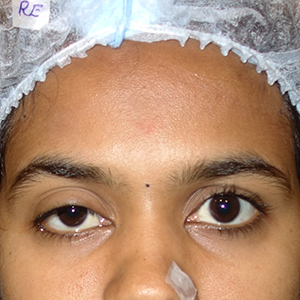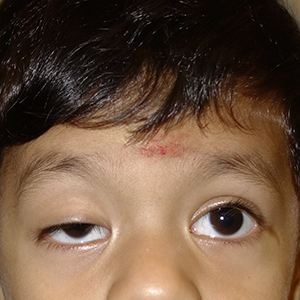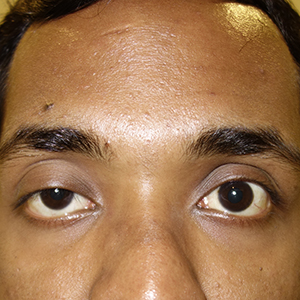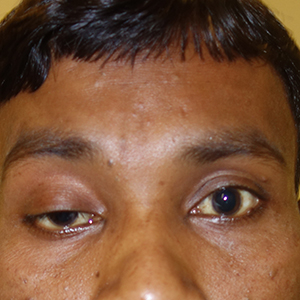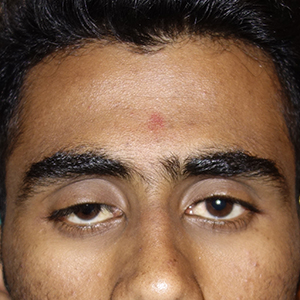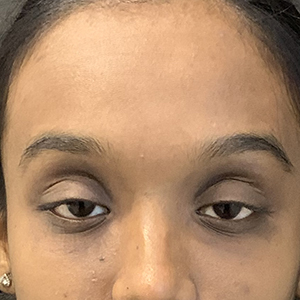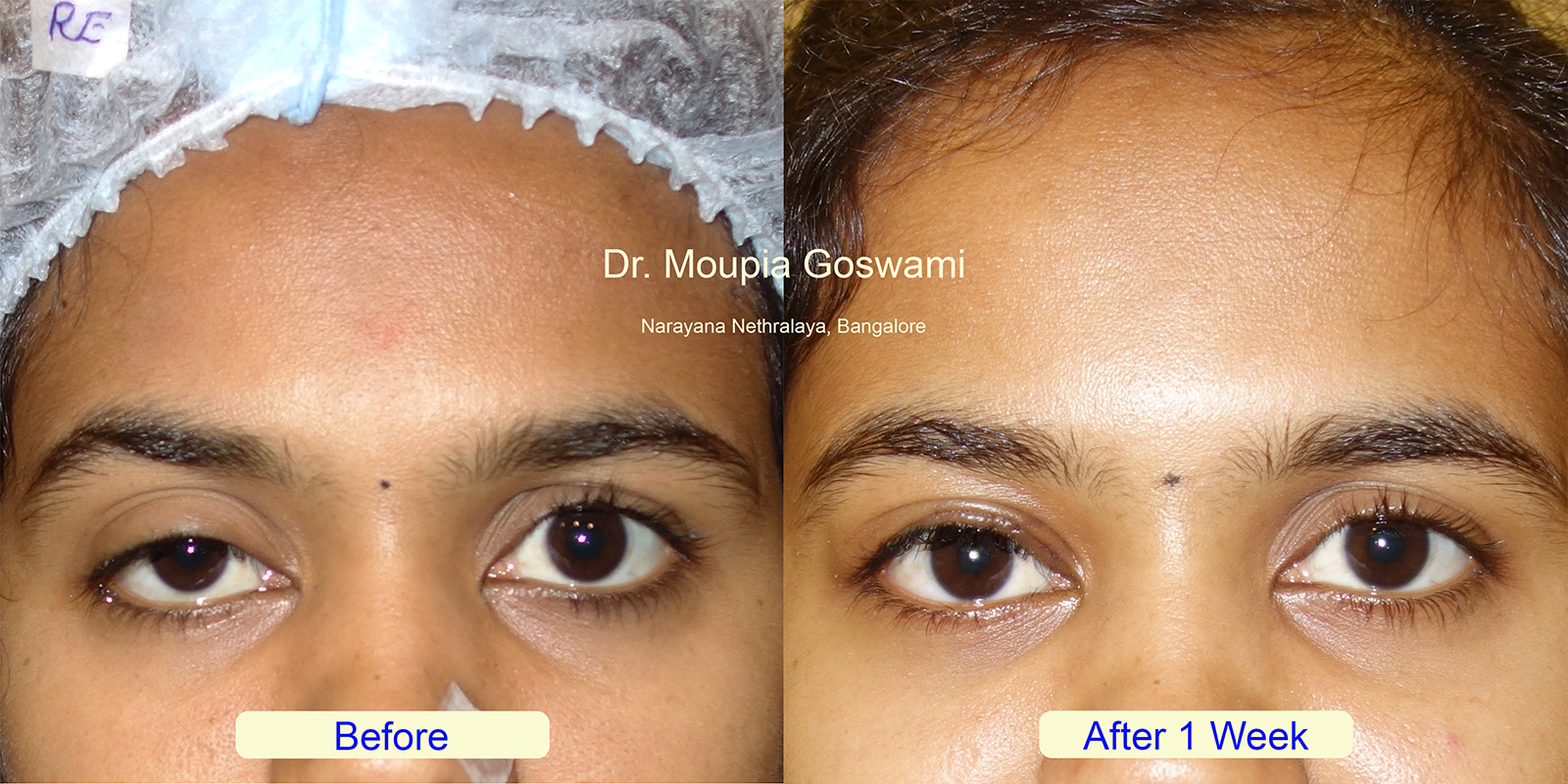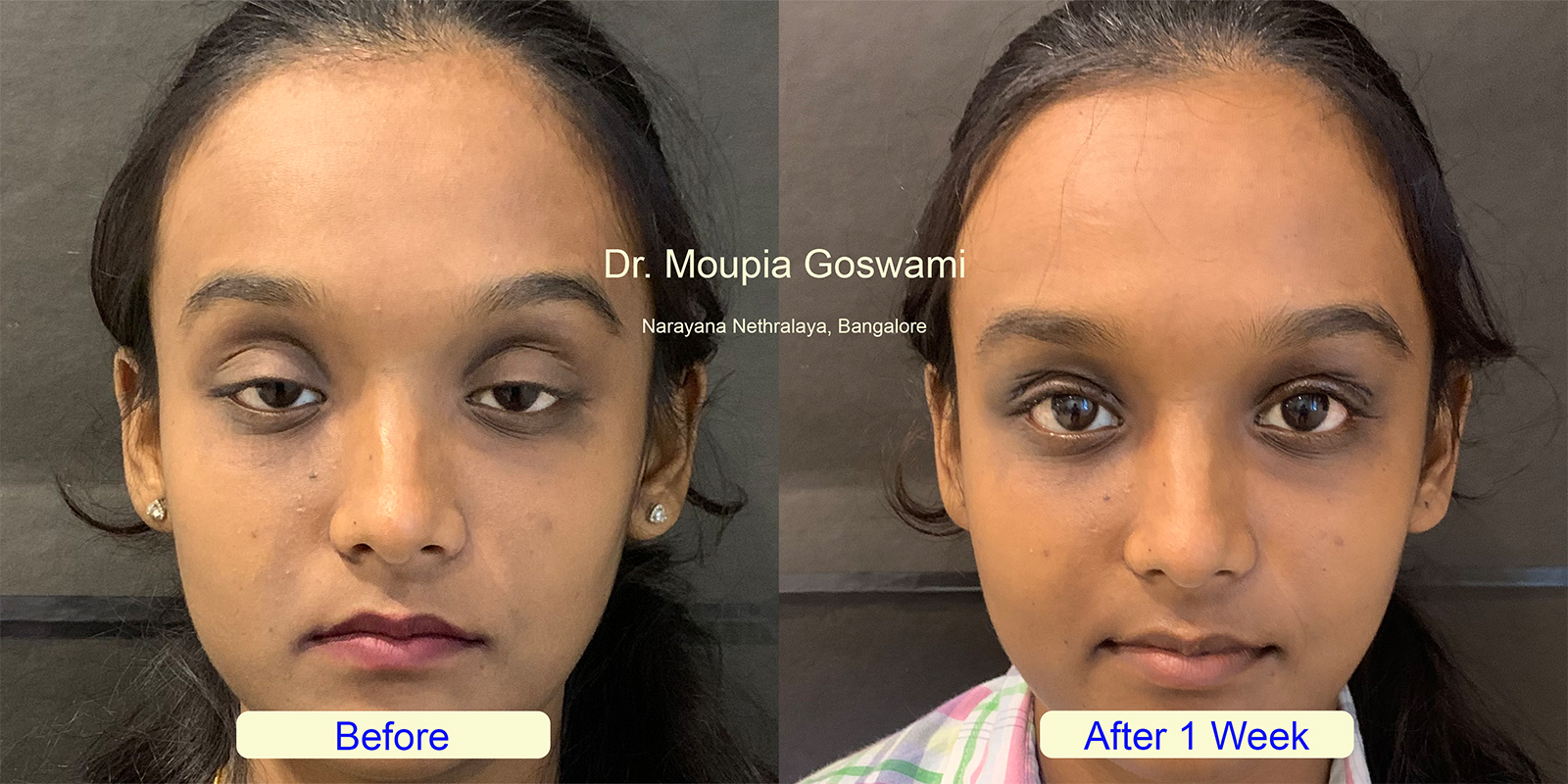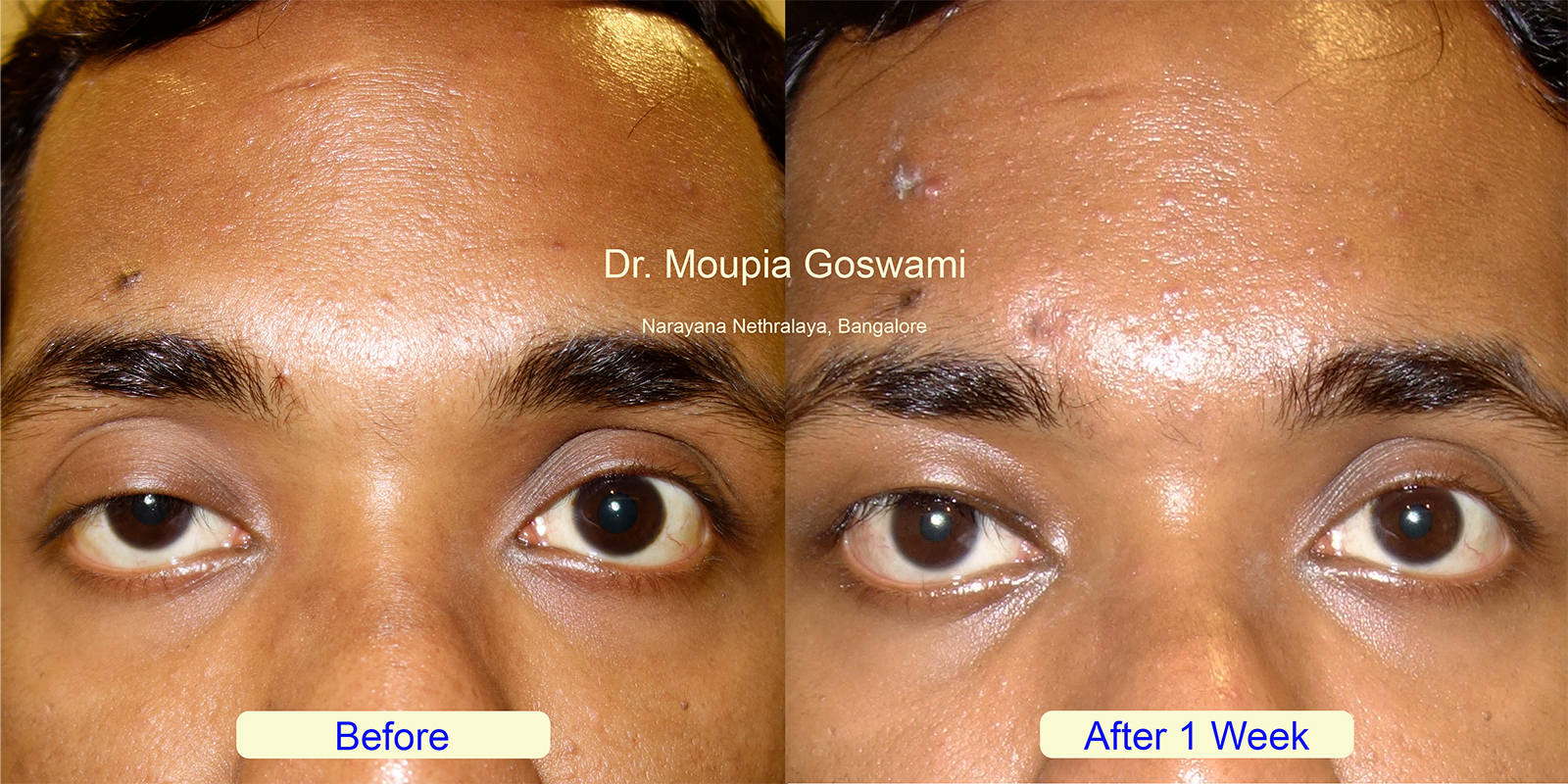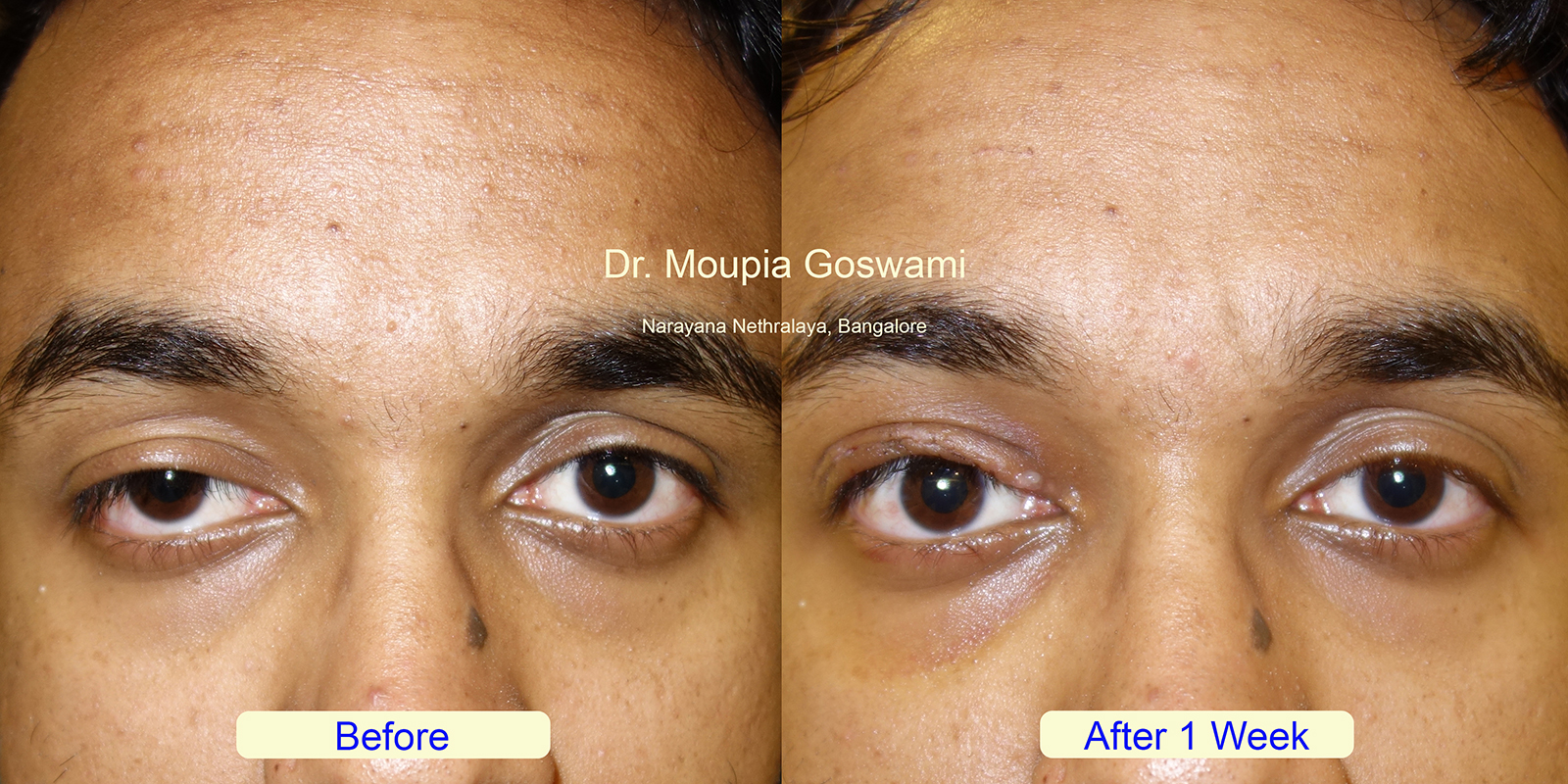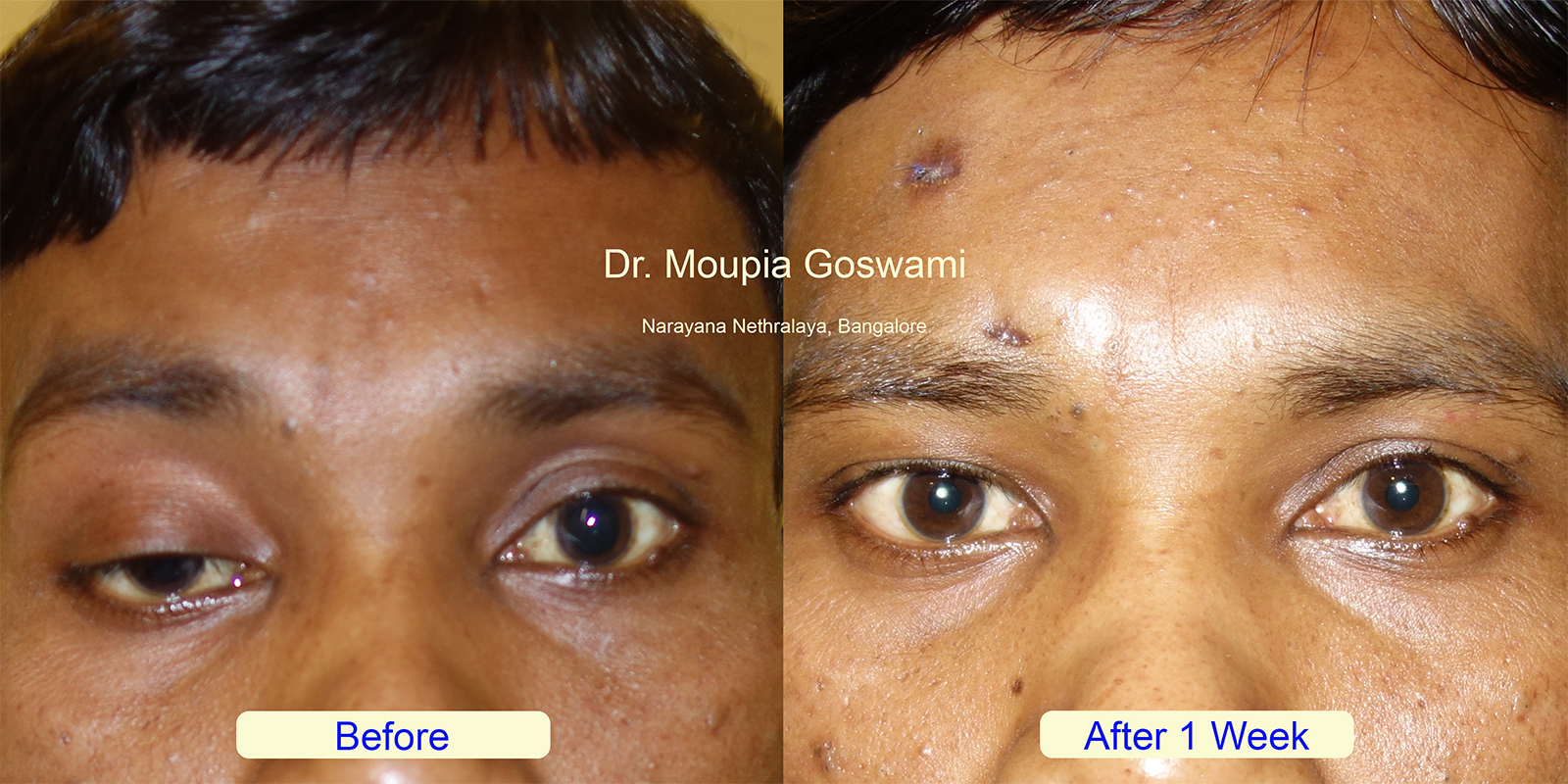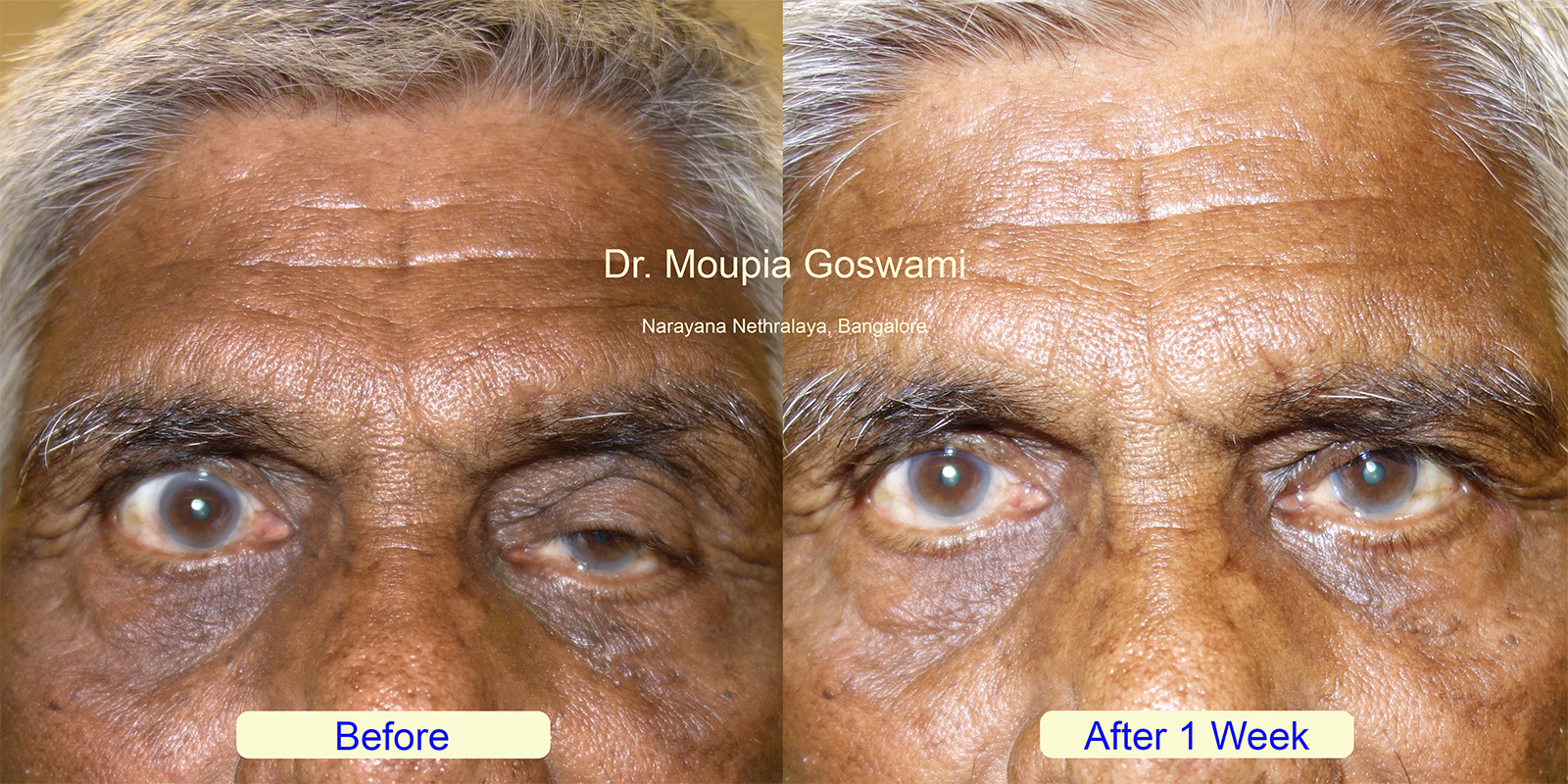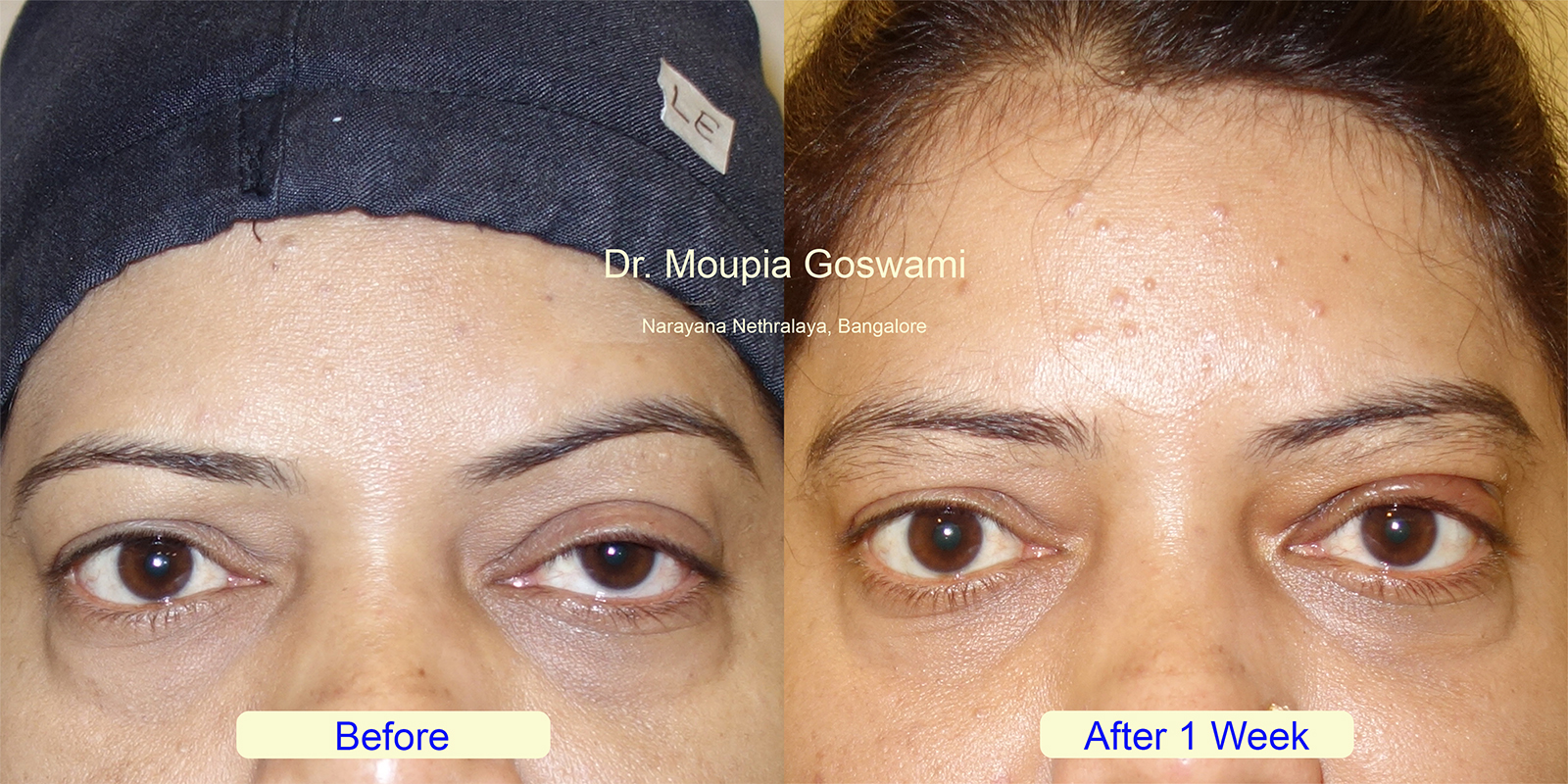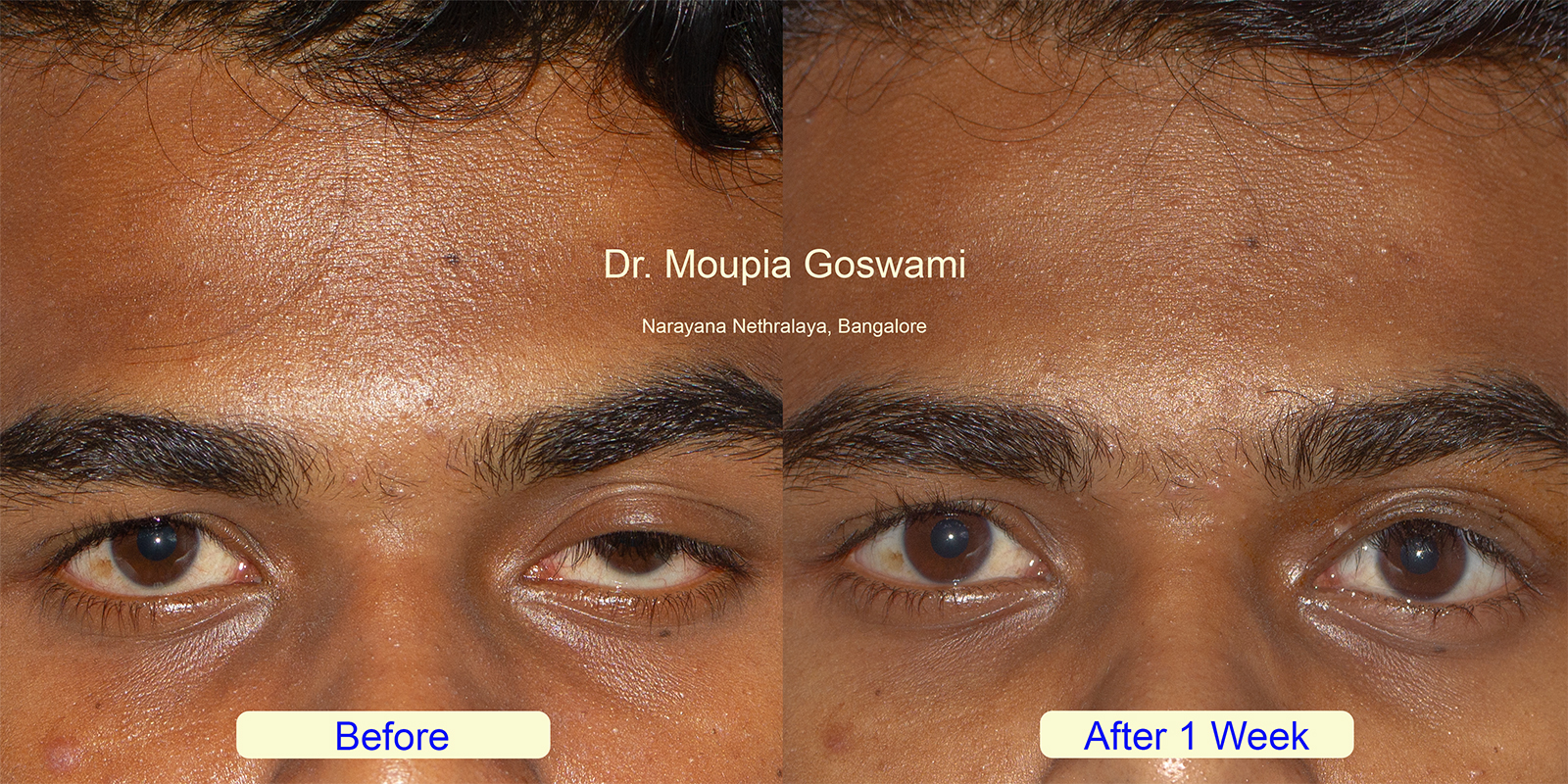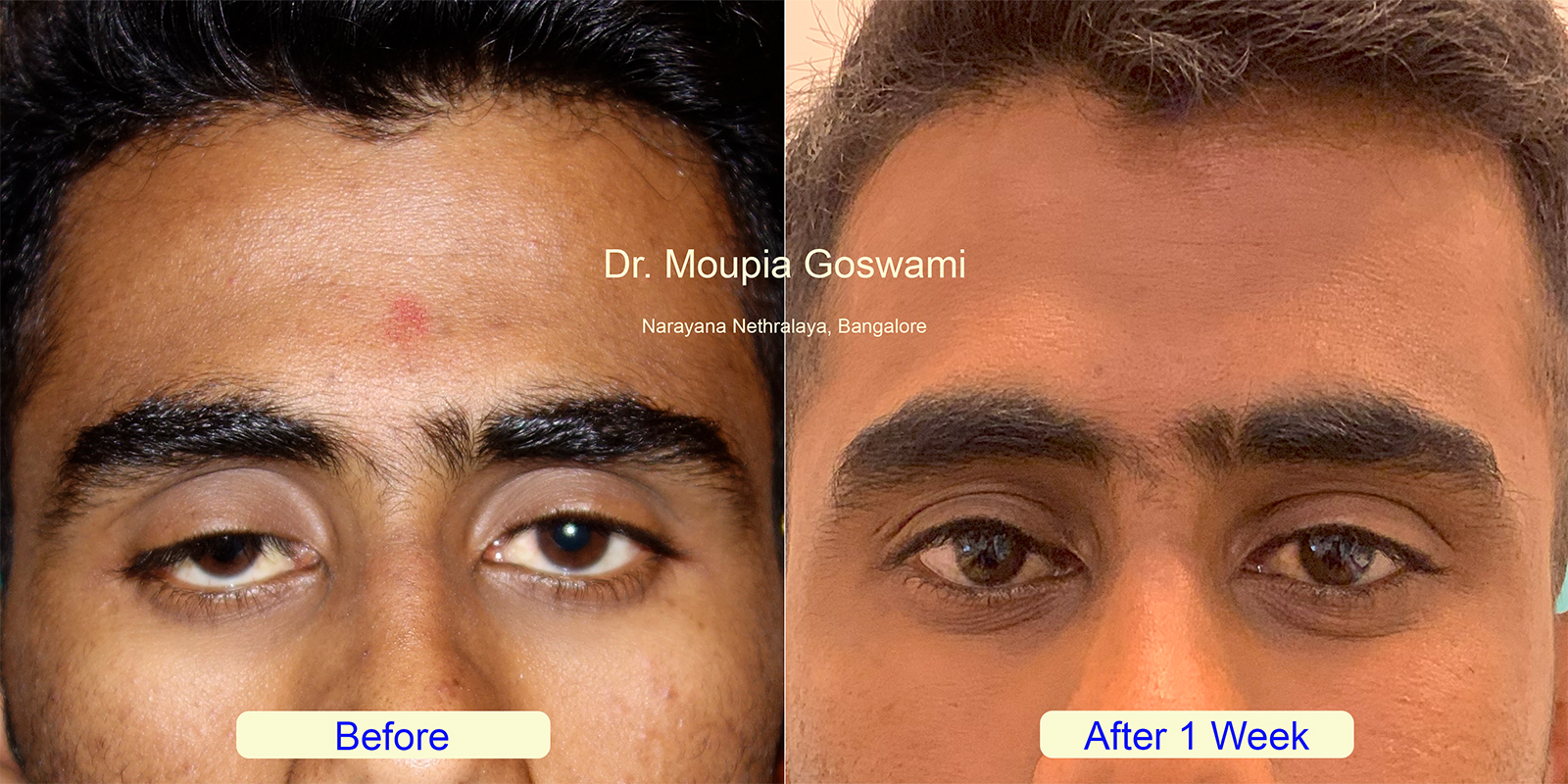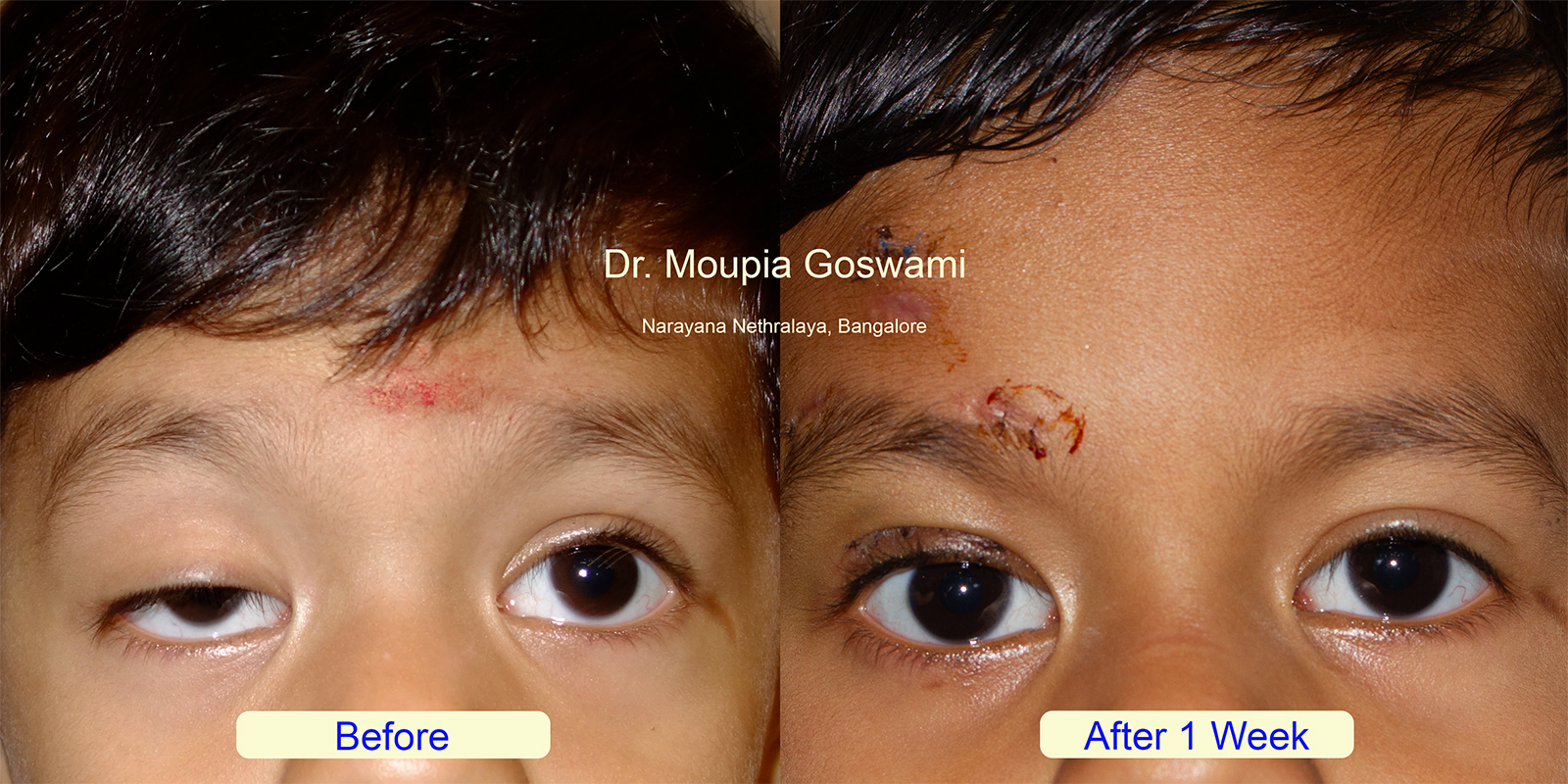Drooping eyelid, medically known as ptosis, refers to a condition where one or both upper eyelids sag lower than their normal position. This can affect one eye (unilateral) or both eyes (bilateral) and may vary in severity, ranging from a slight droop to the eyelid partially covering the pupil. Ptosis can occur in people of all ages but is more common with aging, as the muscles responsible for lifting the eyelids weaken over time.
Ptosis can result from several causes, including congenital issues, nerve or muscle disorders, injury, or even prolonged use of contact lenses. In severe cases, drooping eyelids can impair vision by blocking part of the field of view. Treatment options depend on the underlying cause and severity, and they may include nonsurgical methods or surgical procedures to strengthen or adjust the eyelid muscles, restoring both functionality and a natural appearance.
